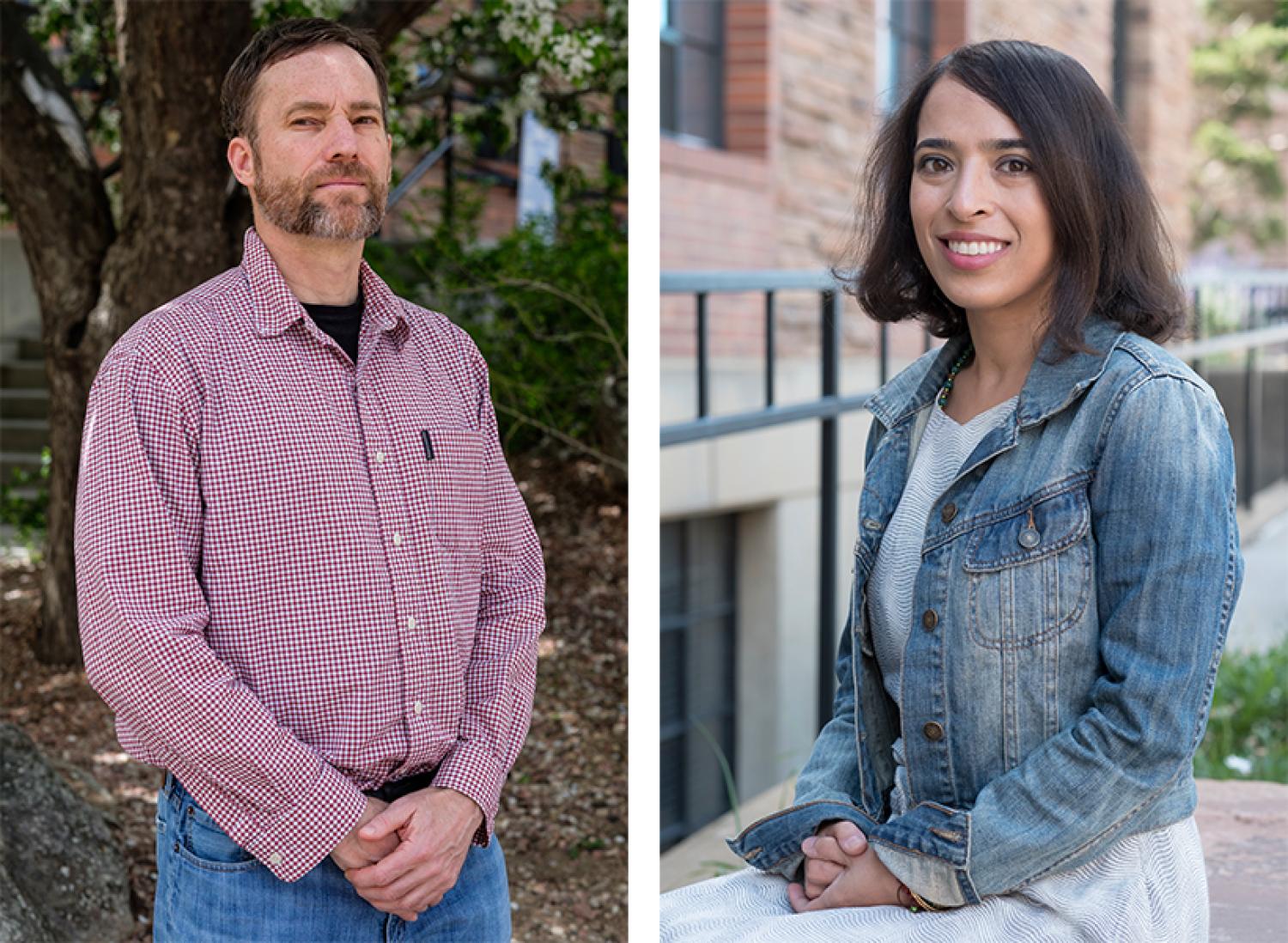Recovering Boulder's tree canopy through community engagement

The Community Engagement, Design and Research Center (CEDaR) is a research organization affiliated with and housed in the Program in Environmental Design. CEDaR works with local governments and partner organizations to complete community-based, integrated ecology projects, which address critical urban issues through environmental design.
In partnership with the City of Boulder, CEDaR, along with principal investigators Michael Szuberla and Sara Tabatabaie, are analyzing residents’ baseline knowledge of the Emerald Ash Borer and proposing ways to address the infestation through environmental education efforts, as well as public-private partnerships.
The Emerald Ash Borer was discovered in Boulder in 2013. This small beetle, which burrows under the bark of ash trees disrupting the flow of nutrients and water, is predicted to cause a 25 percent decline in Boulder’s tree canopy in the next five to 10 years.
Szuberla (left) is a PhD student working with Brian Muller, an associate professor in environmental design and director of CEDar, and is researching how knowledge is built and spread in community gardens. His dissertation will argue that community gardens have value beyond the vegetables they produce.
Tabatabaie (right) completed her PhD in environmental studies, specializing in environmental health in November of 2018. Her dissertation investigates how design features of streets, trees and shade, in particular, affect people’s perception of the street for physical activity.
When the City of Boulder identified the Emerald Ash Borer as a significant threat, the Urban Forest Strategic Plan was created. According to bouldercolorado.gov, the plan was approved in 2018 as a comprehensive assessment of a 20-year plan for the Boulder urban tree canopy developed with extensive input from the community. The overarching goal of this plan is to restore the tree canopy to pre-ash borer levels, which is 16 percent coverage.
As the beetles take their toll in Boulder, the ash trees will need to be cut down safely before dying completely, and replaced with a new set of diverse trees. So far, the city can manage this process on all of Boulder’s public property but has very minimal control over how private landowners will choose to remedy the infestation on their own property.
Seventy-seven percent of Boulder’s total tree canopy is on private property, so landowners, residents and business will need to be educated on proper tree management.
In addition to managing the current infestation, the city will focus on preventing another high percentage loss of tree coverage due to a pest or disease. Private property owners will be encouraged to work together to plant diverse tree species.
“In the 1950s and 1960s, the City of Boulder planted each neighborhood with only one type of tree for uniformity and aesthetics,” Szuberla said.
“Now, Boulder is working to diversify the species of trees throughout the city, but they also need to educate citizens, so that when they are selecting trees to put on their own property they keep in mind what species their neighbors already have and try to select different species.”
Both Szuberla and Tabatabaie have designed a survey to capture the baseline knowledge of residents on the Emerald Ash Borer and to learn more about their remediation plans. The City of Boulder sent out this survey to 30,000 residents in March 2019. Szuberla and Tabatabaie will complete their data collection and analysis this summer as they plan to interview more residents and conduct several focus groups in Boulder.
The results of this survey, along with interviews, will be shared as a report with the City of Boulder. The survey results will also be presented at the Association of Collegiate School of Planning (ACSP) Annual Conference in South Carolina in fall 2019.
The ultimate goal of their research is to develop an effective planning framework to address tree infestation issues in cities and to change the conversation so that cities in the future can maintain healthy tree canopies and ecosystems.
“Urban resilience literature has been more concerned with short-term natural disasters, rather than long-term events with impacts that may not be noticed right away,” Tabatabaie said.
“We are trying to integrate as many factors as possible such as socioeconomic factors and knowledge level of residents.”


